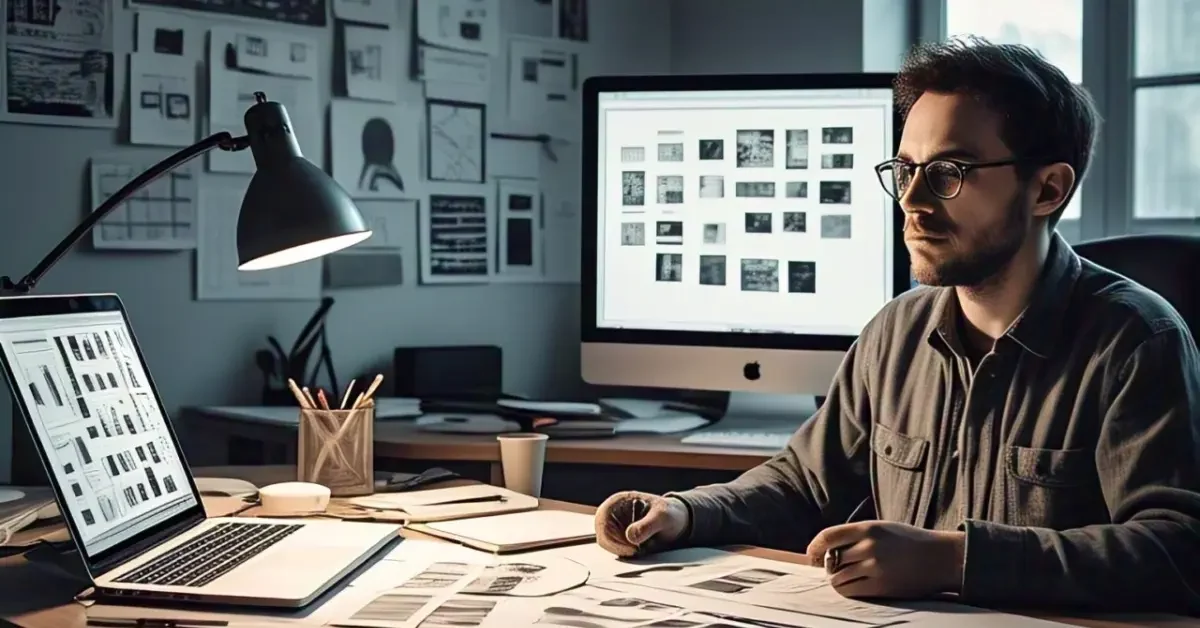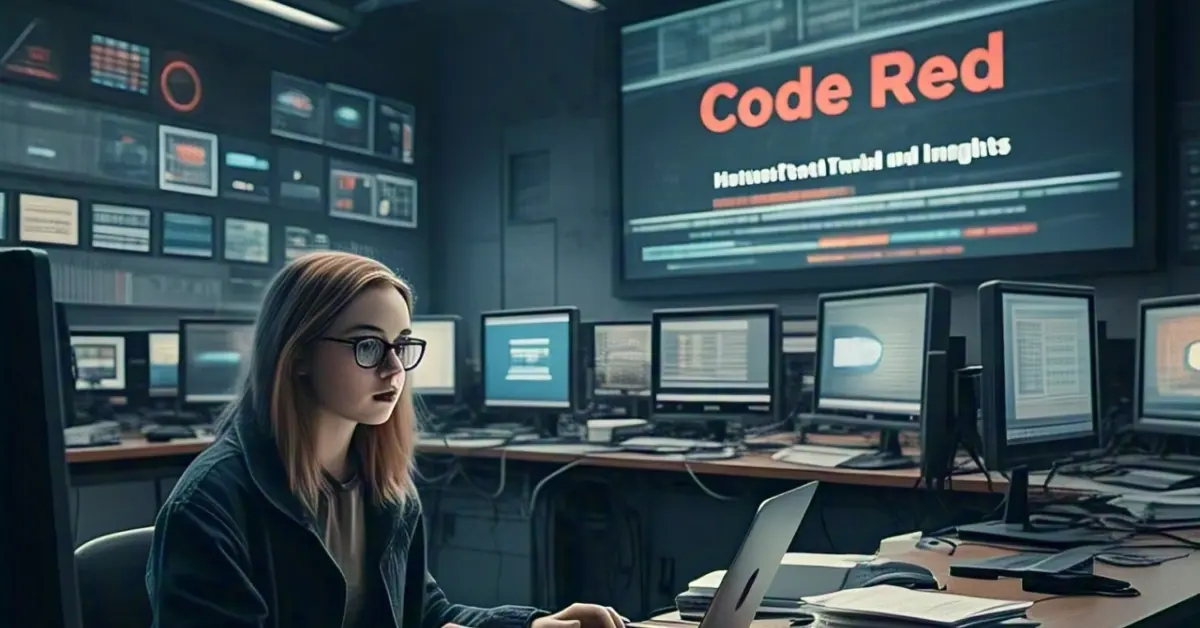Concept plays a vital role in your graphic design journey, serving as the first step to transforming your ideas into visual narratives. This blog post will guide you through each stage of the graphic design process, detailing everything from brainstorming initial concepts to finalizing your design for presentation. You’ll gain insights into techniques, tools, and best practices that will enhance your workflow and elevate the quality of your work. Embrace this journey to unlock your full potential as a graphic designer!
Key Takeaways:
- Process Flow: The graphic design journey involves a systematic flow from initial concept development to final execution, ensuring coherence and alignment with the project goals.
- Collaboration: Effective communication and collaboration with clients, stakeholders, and fellow designers are crucial for refining ideas and achieving desired outcomes.
- Iteration: Emphasizing the importance of iteration, designers often go through multiple rounds of revisions to enhance the quality and effectiveness of the final design.
Understanding Graphic Design
While commenceing on your graphic design journey, it’s vital to grasp the fundamental concept behind this creative discipline. You may find that graphic design is more than just creating visually appealing images; it is a powerful form of communication. The process involves combining art and technology to convey ideas, messages, and information in an engaging way that resonates with your audience.
What is Graphic Design?
Graphic design encompasses a broad range of creative practices, from brand identities and marketing materials to digital content and illustrations. Essentially, graphic design blends typography, imagery, color, and layout to create visual compositions that enhance understanding and provoke emotional responses. By collaborating with various elements, you can craft designs that not only capture attention but also convey an intended message with clarity.
The Importance of Graphic Design in Today’s World
Importance cannot be understated when considering the role of graphic design in our increasingly digital society. In a crowded market, effective design is your key differentiator, allowing you to stand out and build a strong brand presence. Visual communication plays a vital role in user experience, providing intuitive cues and guiding your audience through complex information effortlessly.
Indeed, graphic design impacts every facet of our lives, from the advertisements we see daily to the interfaces we interact with. By investing in quality graphic design, you enhance not only your visual identity but also foster trust and credibility among your audience. An impactful design can evoke emotions, inspire actions, and ultimately drive sales, making it an indispensable asset for any modern business.
Different Types of Graphic Design
World of graphic design is diverse, encompassing various specializations that cater to different needs and target audiences. Each type of graphic design serves a unique purpose and requires distinct skills and techniques. Here are some prominent types:
| Type | Description |
| Branding Design | Focuses on creating a distinct identity for businesses through logos and visual styles. |
| Print Design | Involves designing materials like brochures, posters, and business cards for physical distribution. |
| Web Design | Entails designing layouts and user interfaces for websites and online platforms. |
| Illustration | Creates artwork to visually represent ideas, often utilized in books, magazines, and digital media. |
| Motion Graphics | Involves creating animated visuals for films, advertisements, and online content. |
A comprehensive understanding of these different design types can help you make informed decisions about which approach best suits your goals. Whether you’re looking to establish a new brand or enhance existing materials, each type of graphic design provides its unique advantages in communicating your message effectively.
- Every design type plays a critical role in conveying your brand’s message.
Any exploration into graphic design is bound to reveal new possibilities for expression and connection with your audience. By understanding the different types of graphic design, you position yourself to leverage the right styles and techniques as you navigate your creative journey.
- By delving into specific types, you can enhance your strategic approach to visual communication.
The Initial Concept
One of the most exciting phases in the graphic design journey is the initial concept. This stage sets the foundation for your project and allows you to explore various ideas that can capture your vision effectively. Beginning with a clear idea will ensure that the subsequent design steps flow smoothly, all while embodying the essence of your message. Whether you’re designing for a client or a personal project, understanding how to kick off this creative process can make all the difference.
Brainstorming Ideas
Beside refreshing your creative palette, brainstorming is an integral aspect of shaping your initial concept. It provides you with the opportunity to freely express ideas without the constraint of judgment. Keep a notebook handy or use digital tools to jot down thoughts; sometimes, the most unconventional ideas can lead to remarkable design outcomes. You can also explore different brainstorming techniques, such as mind mapping or free writing, to help you expand your thought process and inspire new concepts.
As you brainstorm, engage with peers or fellow creatives to gather diverse perspectives. Collaboration can enrich your ideas and might bring something to the table that you had not considered. The key is to remain open-minded and avoid filtering your thoughts too early in this phase. This freedom to explore will fuel your creativity as you transition into more structured planning.
Defining Your Target Audience
With every design project, understanding your target audience is paramount. You need to explore deep into who they are, what motivates them, and the visuals that resonate with them. This knowledge will help inform your design choices, ensuring they align with your audience’s preferences and needs. Take time to create a user persona that encapsulates demographic details, interests, and pain points relevant to your intended audience.
Considering your target audience also involves analyzing their behavior and values. What are their aspirations? What problems are they looking to solve? By answering these questions, you’ll be able to shape your design to speak directly to their desires. This insight paves the way for a more engaging and relevant project that resonates well with your users, forging a connection that is important for effective communication.
Researching Competitors
Behind every successful design project lies thorough competitor research. Before finalizing your concept, take time to analyze what others in your niche are doing. Look at their designs, branding strategies, and user engagement approaches. This not only helps you understand the landscape but also shows you how to differentiate your work from theirs. Knowing your competitors enables you to identify gaps in the market that you can exploit through unique visuals or messaging.
The insights you gain from competitor analysis can significantly guide your design choices. Notice what resonates well with the audience and what doesn’t, and use that wisdom to craft a unique approach. While it’s important to draw inspiration from others, avoid the temptation to mimic. Strive for originality in your work, as this will ultimately provide a stronger connection with your audience and help you stand out in a crowded market.
Planning and Strategy
To initiate on your graphic design journey effectively, you need to develop a solid plan and strategy. This phase is important for transforming your creative ideas into tangible outcomes. Proper planning not only helps to clarify your vision but also sets the stage for every subsequent step in the design process. By defining your objectives and gathering relevant information, you can streamline your creative workflow and focus on what truly matters. In this chapter, we’ll explore the important components of planning and strategy including creating a design brief, setting objectives and goals, and establishing a timeline.
Creating a Design Brief
By starting with a comprehensive design brief, you can outline your project requirements and expectations. This document serves as a foundational guide that ensures everyone involved understands the objectives, target audience, and design parameters. A well-crafted brief typically includes details such as the project’s scope, preferred color scheme, typography, and any specific constraints that need to be addressed. Having this information at your fingertips empowers you to make informed design decisions and keeps the project aligned with your vision.
Incorporating feedback from stakeholders into your design brief can also enhance its effectiveness. By clarifying key messages and desired outcomes, you reduce the risk of miscommunication and misunderstandings later on. This approach encourages collaboration and fosters a strong working relationship between you and your clients or team members, which can significantly enhance the design process.
Setting Objectives and Goals
With clear objectives and goals in place, you can navigate your design project with purpose and direction. Establishing measurable outcomes allows you to evaluate the success of your design and ensures that your efforts align with both the client’s needs and your creative vision. When setting these goals, think about what you want to achieve through the design. Consider aspects like increasing brand awareness, driving conversions, or enhancing user experience, and tailor your objectives to inform your creative choices.
And beyond merely crafting aesthetically pleasing visuals, setting specific goals will enable you to focus on functionality and effectiveness. Define what success looks like for your project by considering factors such as audience engagement, feedback, and the overall impact of your design. This clarity not only enhances the design process but also provides a benchmark for evaluating your work upon completion.
Establishing a Timeline
Along with your objectives, establishing a timeline is integral to the planning phase. A realistic timeline informs all stakeholders about what to expect and when, helping to keep the project on track. Consider breaking your project into phases, outlining key milestones and deadlines that guide you through the design process. This structure can help you allocate sufficient time to each aspect of your project, from research and conceptualization to revisions and final delivery.
Additionally, a well-thought-out timeline allows you to identify potential roadblocks early on, giving you the opportunity to address them before they derail your progress. By setting clear deadlines, you promote accountability and maintain momentum throughout the project lifecycle.
Also, don’t hesitate to build in some buffer time for unexpected challenges and revisions. Design is often an iterative process, and having this flexibility can alleviate pressure and enhance the overall quality of your work. By prioritizing effective planning and strategy, you lay a strong foundation for a successful graphic design journey.
Design Development
After you have established a solid foundation through your initial concepts, it’s time to probe into the design development phase. This stage is where your ideas begin to take tangible form, shaping the direction of your project as you work towards a polished final product. You’ll find yourself engaging in various techniques that will help refine your visual messaging, ensuring that everything aligns with your overarching vision.
Sketching and Wireframing
To effectively communicate your ideas, you should start with sketching and wireframing. These tools are invaluable for visualizing your concepts as they allow you to explore multiple layouts and approaches without the constraints of digital platforms. By drafting rough sketches, you can quickly iterate and identify the best elements to incorporate into your designs. Wireframes serve as a blueprint, providing structure while enabling you to focus on functionality and user experience.
To maximize the effectiveness of this process, it’s crucial to keep an open mind and remain flexible. As you sketch and wireframe, don’t hesitate to experiment with different styles or layouts. This experimentation not only assists in clarifying your ideas but can also spark new approaches that you may not have initially considered. The goal is to arrive at a strong visual framework that resonates with your target audience and supports your content objectives.
Selecting Color Schemes and Typography
Schemes play a significant role in establishing the mood and tone of your design. When deciding on a color palette, you should consider the emotions associated with different colors and how they can influence the overall perception of your brand. Complementary colors can enhance visual interest while ensuring harmony, so it’s helpful to create a cohesive look that is both appealing and effective in conveying your message. Typography is equally crucial; the right typeface not only enhances readability but also reinforces your brand’s personality.
Also, pay attention to the combination of fonts you choose, as it can significantly impact the overall aesthetic of your design. You might want to establish a visual hierarchy through font weights and sizes, ensuring that critical information stands out while still maintaining a unified look. Together, your chosen color schemes and typography create the persona of your design, and when done right, they can leave a lasting impression on your audience.
The Role of Visual Hierarchy
Design elements must be organized to guide viewers seamlessly through your content. Visual hierarchy refers to the arrangement of elements to emphasize the most important information first. By prioritizing certain aspects of your design, you can effectively control the flow of information and ensure that your audience grasps the crucials without feeling overwhelmed.
It is crucial to implement various techniques, such as varying sizes, colors, and placements to establish this hierarchy. Make use of contrasting elements to draw attention where it is needed most, balancing visual weight to create an inviting layout. Understanding how to leverage visual hierarchy will not only improve the user experience but also enhance the overall impact of your design, leading to successful communication of your message.
Tools of the Trade
Not every graphic designer is equipped with the same skills or tools. However, there are certain software and resources that have become industry standards, allowing you to bring your creative vision to life. Mastering these tools is vital as they will significantly impact your workflow and the quality of your output.
Graphic Design Software Overview
Software choices can dictate how effectively you can execute your creative ideas. Popular programs like Adobe Creative Suite, which includes Photoshop for raster graphics and Illustrator for vector design, have become immensely popular among designers. Other platforms like CorelDRAW and Affinity Designer offer excellent alternatives that you might find more suitable depending on your style and project requirements. Each software has unique features, interfaces, and functionalities, making it important for you to explore and find the best match for your design needs.
Additionally, web-based tools like Canva provide user-friendly solutions for quick designs without requiring extensive software knowledge. These platforms often incorporate templates and drag-and-drop features that streamline the design process, making it easier for you to focus on your creativity rather than getting bogged down by technical tutorials.
Essential Tools for Designers
One of the key aspects of graphic design is having the right tools at your disposal. This goes beyond just software; it includes hardware and accessories that help elevate your design process. A high-quality computer or laptop with ample RAM and a powerful graphics card is vital for running design software efficiently. A professional-grade graphics tablet can also enhance your ability to create detailed illustrations and designs, allowing you to produce work that feels more organic.
At the same time, investing in peripherals such as color calibration devices and external monitors can greatly improve your design output. These tools help ensure that you are accurately representing colors and details, which is vital in maintaining the integrity of your work. Additionally, utilizing project management tools can streamline collaboration and feedback, making the design journey from concept to completion more efficient.
Staying Up-to-Date with New Technologies
Across the graphic design landscape, technology is constantly evolving. As a designer, it’s vital for you to stay updated on emerging software and tools that can enhance your workflow. Regularly exploring design blogs, attending workshops, or participating in online courses can ensure you’re equipped with the latest methods and innovations in the field. This knowledge helps you keep your skills sharp and your portfolio fresh.
Moreover, becoming an active member of design communities can expose you to groundbreaking ideas and trends. Engaging in discussions and sharing experiences with peers allows you to discover tools you may not have encountered otherwise, fostering inspiration and growth in your own projects.
Design trends and software frequently shift, so your adaptability is key. By staying informed and open-minded, you’ll enhance your design capabilities and ensure you’re leveraging the most effective technologies for your projects.
Feedback and Revisions
For every designer, the feedback and revision phase can be one of the most intensive parts of the graphic design journey. This is where ideas evolve, and the final product takes shape. Engaging with feedback is not just about accepting criticism; it’s about embracing the opportunity to enhance your work and align it more closely with client or stakeholder visions. The revisions you make in this stage can lead to a more polished and effective design that resonates with your audience.
The Importance of Constructive Criticism
By seeking out constructive criticism, you open the door to valuable insights that can refine your design. Feedback helps you to see your work from different perspectives, providing a broader view of how your design communicates its intended message. It allows you to identify elements that may not be as effective as you initially believed, enabling you to make informed changes that enhance the overall quality of your work.
By inviting critique from trusted peers or mentors, you cultivate an environment of growth and collaboration. Constructive feedback serves as a guide, pointing out the strengths and weaknesses in your design. Ultimately, this process equips you with the skills to produce work that not only meets expectations but exceeds them, reinforcing your confidence as a designer.
Working with Clients and Stakeholders
On the other hand, when you collaborate with clients and stakeholders, communication is key. This relationship hinges on understanding their vision while ensuring that you maintain the integrity of your design. You may encounter diverse opinions and preferences, which can lead to differing suggestions on changes. Navigating these discussions requires you to balance their requests with your professional judgment, creating designs that reflect their needs while remaining true to effective design principles.
On top of that, establishing clear channels of communication allows you to advocate for your design choices while also respecting the client’s input. Regular check-ins and asking open-ended questions can result in a dialogue that helps you capture their vision more effectively. Fostering this collaborative environment enhances trust, ultimately contributing to a smoother feedback process.
To manage revisions effectively, you can create a structured feedback process that includes timelines and specific goals. Sketching out a plan for receiving and implementing feedback can significantly streamline this stage of your design journey. Have guidelines in place so that when feedback arrives, you can prioritize changes based on importance and relevance, rather than reacting impulsively to every comment.
Managing Revisions and Changes
By embracing an organized approach to managing revisions and changes, you can reduce the stress often associated with this phase. Prioritize feedback based on the project’s objectives and the impact it has on the overall design. Creating a system to categorize feedback—such as major revisions versus minor tweaks—will help you stay focused and efficient. Utilize tools like timelines or project management software to track the progress and ensure that no detail falls through the cracks as you create your final piece.
Working through revisions should also embrace flexibility and open-mindedness. While you may have a strong attachment to your original ideas, being willing to adjust and iterate will ultimately serve your design growth. The ability to accept changes and incorporate them thoughtfully can transform your initial concept into a standout final product that meets all stakeholders’ expectations. Your efforts in this stage will help cement your reputation as a responsive and resourceful designer.
Finalizing the Design
Once again, you find yourself at an important juncture in the design process: finalizing your design. This phase not only entails wrapping up your creative visions but also involves orchestrating the details that will bring your project to life. Ensuring that every element aligns with your initial goals and meets your client’s expectations is important as you prepare your work for distribution.
Preparing Files for Print and Digital
Behind the scenes, preparing files for both print and digital mediums requires a meticulous approach. You need to ensure that your design maintains its integrity across different formats, whether that be high-resolution PDFs for print or optimized JPEGs for online use. Correct dimensions, color profiles, and file types must all be taken into account to guarantee that the final output reflects your vision accurately.
In practical terms, this means double-checking that images are at least 300 DPI for print and adjusting your color modes appropriately — using CMYK for print materials while ensuring RGB or hex codes are applied for digital formats. The methodical approach you take during this stage can save you from costly reprints or digital misrepresentations later on.
Quality Control and Proofing
Before you send your design off for final production, implementing a robust quality control and proofing process is vital. This step acts as your safety net, catching any potential errors or inconsistencies that might have slipped through your earlier checks. You should examine everything from typography to color accuracy to ensure what you see on your screen is what will be printed or published.
In this phase, it’s often beneficial to have a second set of eyes on the design. Inviting feedback from colleagues or your client can provide valuable insights that help spot any overlooked details. You may also consider printing a physical proof or reviewing a digital mockup to assess how the design behaves in its intended context.
For instance, examining your printed proof will allow you to evaluate the weight of the paper, color vibrancy, and overall finish, helping you decide if any last-minute tweaks are necessary. It’s your final opportunity to ensure that every detail aligns with your expectations before mass production.
Delivering the Final Product
Design is not just about the creation of something visually appealing; it extends to the delivery of the final product. You should approach this step with as much care as you did during the conceptual phase. Whether your project entails sending printed materials to a client, publishing digital assets, or uploading a website, managing these logistics is important to your design’s success.
In terms of delivery, clear and organized communication guarantees that you meet client expectations. Provide them with all necessary information, such as asset formats, usage rights, or how to access digital files. This ensures a smooth transition from your creative workspace to the client’s hands, solidifying your professionalism and attention to detail.
Further to that, when delivering physical products, consider the presentation. Packaging can enhance the perceived value of your work, so take the time to think about how you want your final designs to be experienced. A well-designed package or delivery method can elevate the recipient’s experience and keep you in good standing for future projects.
To wrap up
Drawing together each phase of the graphic design process equips you with both the practical skills and strategic thinking required to navigate from concept to completion. You start with a vision, gathering ideas that inspire your design, and then gradually develop those ideas into visual representations. By understanding the importance of research, brainstorming, and iteration, you’re able to refine your work, ensuring it resonates with your intended audience. Each step—from sketching initial concepts to finalizing your design—adds precision and depth to your overall vision, ultimately leading to a polished product that reflects not only your creativity but also your dedication to the craft.
Your graphic design journey represents an evolution of both skills and perspectives. The collaboration with clients, feedback sessions, and your own critical evaluations allow you to grow as a designer and adapt your approach for each unique project. Embracing these experiences fuels your creativity and enhances your problem-solving abilities, directing you toward innovative solutions and compelling designs. As you continue on this path, you’ll find that each project deepens your expertise and broadens your understanding of design, setting you up for future success in an ever-evolving field.




